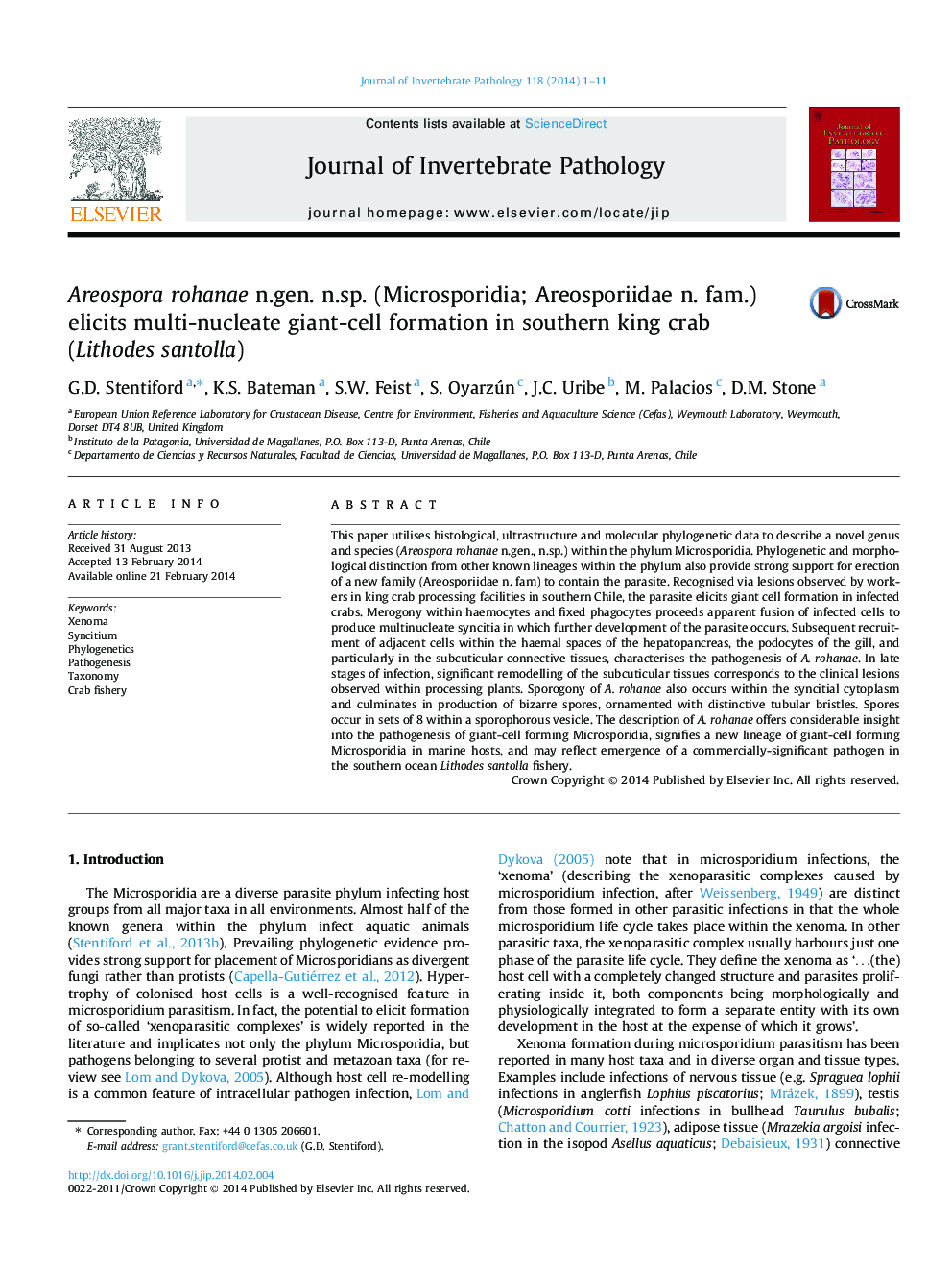| کد مقاله | کد نشریه | سال انتشار | مقاله انگلیسی | نسخه تمام متن |
|---|---|---|---|---|
| 4557738 | 1628234 | 2014 | 11 صفحه PDF | دانلود رایگان |

• Crab processing workers observed lesions in tissues of a highly valuable crab species.
• Pathology and molecular phylogeny revealed a novel family, genus and species in the Microsporidia.
• The parasite elicits giant cell syncitium formation in host tissues.
• Parasite development culminates in production of bizarre, ornamented spores.
This paper utilises histological, ultrastructure and molecular phylogenetic data to describe a novel genus and species (Areospora rohanae n.gen., n.sp.) within the phylum Microsporidia. Phylogenetic and morphological distinction from other known lineages within the phylum also provide strong support for erection of a new family (Areosporiidae n. fam) to contain the parasite. Recognised via lesions observed by workers in king crab processing facilities in southern Chile, the parasite elicits giant cell formation in infected crabs. Merogony within haemocytes and fixed phagocytes proceeds apparent fusion of infected cells to produce multinucleate syncitia in which further development of the parasite occurs. Subsequent recruitment of adjacent cells within the haemal spaces of the hepatopancreas, the podocytes of the gill, and particularly in the subcuticular connective tissues, characterises the pathogenesis of A. rohanae. In late stages of infection, significant remodelling of the subcuticular tissues corresponds to the clinical lesions observed within processing plants. Sporogony of A. rohanae also occurs within the syncitial cytoplasm and culminates in production of bizarre spores, ornamented with distinctive tubular bristles. Spores occur in sets of 8 within a sporophorous vesicle. The description of A. rohanae offers considerable insight into the pathogenesis of giant-cell forming Microsporidia, signifies a new lineage of giant-cell forming Microsporidia in marine hosts, and may reflect emergence of a commercially-significant pathogen in the southern ocean Lithodes santolla fishery.
Figure optionsDownload as PowerPoint slide
Journal: Journal of Invertebrate Pathology - Volume 118, May 2014, Pages 1–11